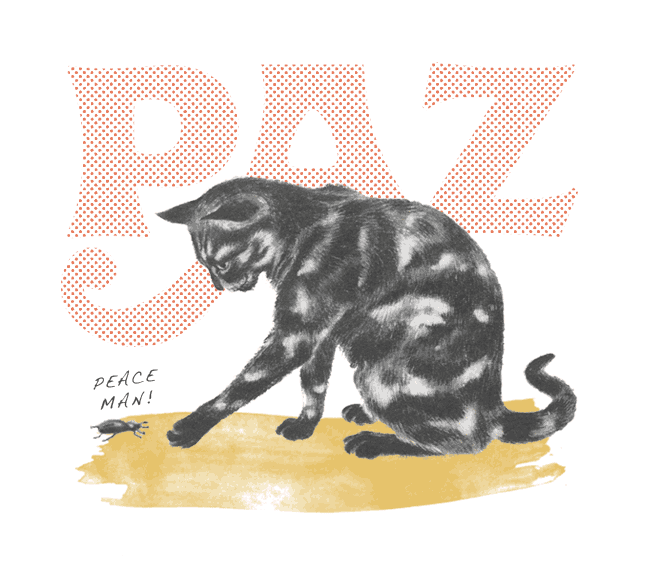Post By Dr. Cindy Carter
The mouth. It’s a pretty disgusting place, both in humans and in our dog and cat counterparts. It’s warm and wet and a great place for bacteria to set up shop. With that thought in mind, how many of you out there brush your pet’s teeth? Give them dental chews daily? What about plan for a professional dental cleaning for your pet every year?
We know that the human mouth is home to billions of living microbes, so what makes us think that our pet’s mouths are any more sterile? This is why dentistry is such an important part of routine pet health care. At every visit to PAZ Veterinary, your pet will have an oral exam as part of their complete physical examination. We grade the degree of tartar build-up, gingivitis, gingival recession, and look for any fractured or loose teeth. In puppies and kittens we monitor the deciduous, or baby teeth, for growth, occlusion, and to make sure they are falling out and being replaced by adult teeth in a timely manner. We strive to share information with you at each visit about the current state of your pet’s oral health, but if you ever have any questions or concerns that we don’t address right away, be sure to ask!
Let’s start off by discussing what you can do at home to care for your pet’s teeth…
At-Home Care
Don’t be overwhelmed by thinking that you have to brush your dog’s teeth twice every day in order to keep them from every having to have a dental cleaning. There is a wide array of options for at-home oral health care for your pet depending on how involved you can/want to be, and what your pet will allow. The best at-home dental care routine is the one that both you and your pet are willing to participate in.
The number one recommended option for caring for your pet’s teeth is to routinely brush them. And by routinely I do mean daily. You should consider your pet’s teeth just like your own. If you only brushed once a month, what do you think your teeth would look like, and how would your breath smell? It’s exactly the same with them. Often groomers will brush your dog’s teeth for you when you take them in every 4 or 6 weeks, but this won’t be enough. Really, daily brushing is the best, but if you can try to get it done every other day then you should have fairly similar results. There are some great pet safe toothpastes out there which help to entice your dog or cat and make it a treat. They don’t contain fluoride or any other ingredients that are supposed to kill bacteria or prevent gum disease though. For more information on exactly how to approach your pet to clean their teeth, see our video blog: Teeth Cleaning 101.
Other options for at-home care are dental diets, chews, and water additives. Think of these options as supplementary to brushing. If you only used a mouthwash once daily or only chewed gum to remove chunks of food from your teeth, you wouldn’t have the same impact as brushing. There is a great organization called the Veterinary Oral Health Council (VOHC) which puts dental products through trials to test their efficacy, then awards their seal to those products which meet their claims. You can see a list of all their current approved products at http://www.vohc.org/accepted_products.htm. .
What if you can’t brush your pet’s teeth or they don’t like chews? What if they already have so much tartar that nothing you do will make a difference? See below!
The “Tooth” About Professional Dental Cleanings
The reality is that about 80% of pets have appreciable dental disease by the time they are 3 years of age, and are in need of a professional dental cleaning. Even with at-home care, you should expect your pet to have 2 or more cleanings done in their lifetime. Small breed dogs and cats tend to need even more frequent care. And this isn’t a bad thing! These procedures allow an opportunity to get rid of all that nasty bacteria in the mouth and perform any needed extractions. Gingivitis and diseased teeth are painful conditions, so the opportunity to address them will greatly increase your pet’s quality of life.
So what exactly does a dental cleaning entail? First we remove the large chunks of tartar from the outside of the teeth using hand tools, then the area underneath the gumline as well as all surfaces of the teeth are scaled and polished. It’s really very similar to what your dentist does during your annual cleaning! We use a probing tool to check around each tooth for pockets, or areas where bone has been lost and the gingiva is no longer adhering normally. Dental x-rays are taken at this point as well, and any extractions that are needed are performed. Lastly we apply a sealant to discourage new plaque adherence. Now your pet has a shiny new smile and fresh breath! A perfect time to start working on your at-home oral health care routine!
Dental cleanings on pets are most safely and effectively accomplished under general anesthesia. There are many reasons for this. First and foremost, a dental cleaning can be painful, especially if you have they have any degree of gum disease and sensitivity. By anesthetizing our patients we are eliminating any pain they might feel during the procedure. Additionally the sedatives we give before the procedure provide pain relief while they are waking up, and any pets that require teeth to be extracted receive pain injections that last for up to 24 hours after the procedure. Furthermore, when pets are anesthetized they are intubated so that no bacterial debris or water can go down their trachea into their lungs. And finally, just as important as the safety of the pet, anesthesia allows safety for the individual doing the cleaning as there is no opportunity for the pet to bite out of fear or pain.
Are there non-anesthetic options for dental cleanings for pets? Yes. Are they safe? Most likely (although see above; there may be opportunity for injury to the person performing the procedure). Are they effective? No. The main issue with these types of cleanings is that there is likely no subgingival curettage (a fancy word for scraping the tartar that develops underneath the gumline), so really you only get a partial cleaning. If this actually is accomplished then as I mentioned before it is most likely painful for the pet to experience. Bacteria remaining below the gumline can continue to cause damage to the teeth, gums, and surrounding bone. Additionally, dental x-rays and extractions cannot be done without anesthesia. For more information about these types of cleanings, check out what the American Veterinary Dental College has to say here at this link!
…And hey, speaking of extractions, stay tuned for my next blog on just that!






